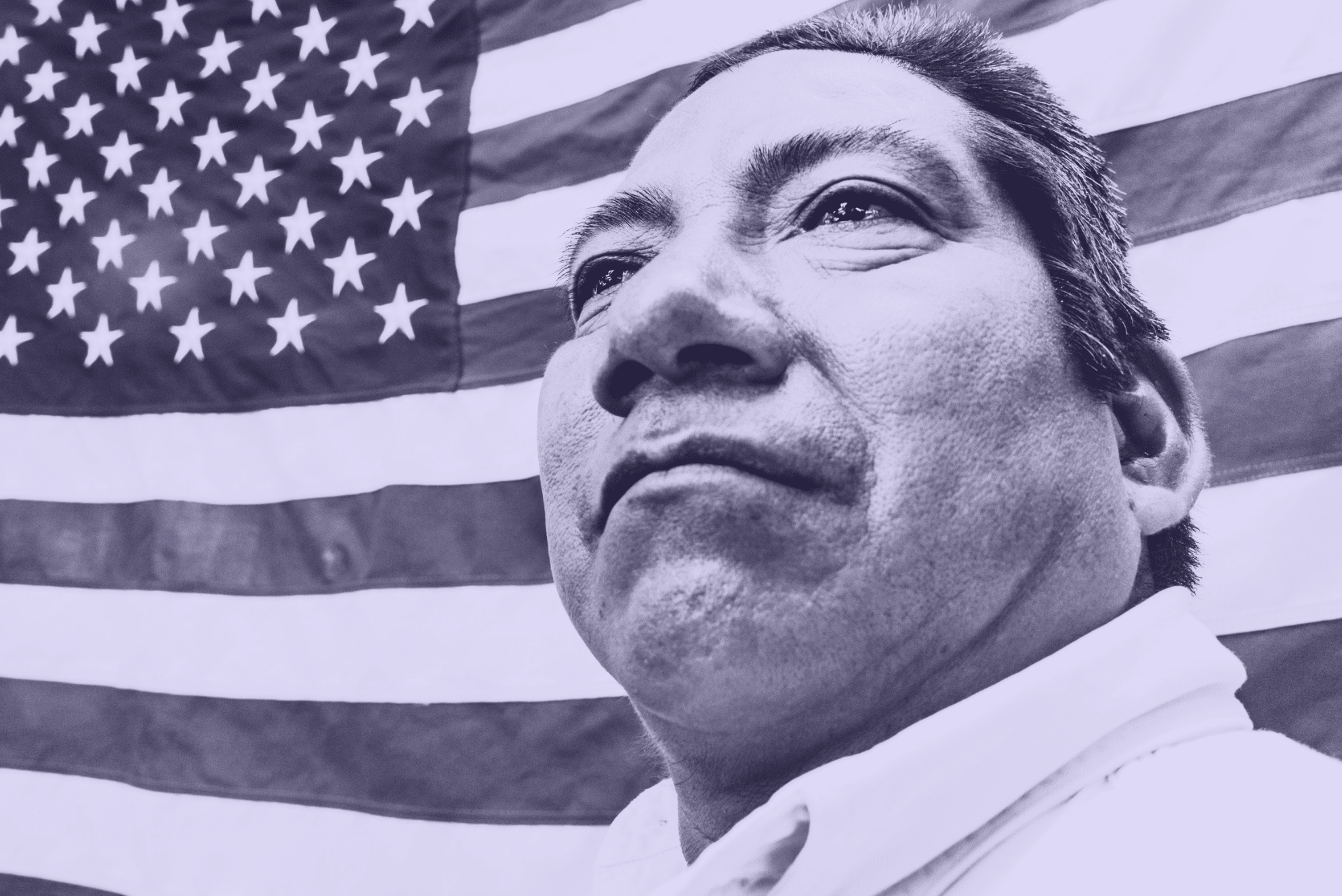Migration Trends Impacting Healthcare
The world is just as big as ever, but across its broad and undulating surfaces peoples are moving as never before. Wars in the Middle East and Ukraine; gang violence in Latin America; drought and flooding in Africa and Central and South Asia; starvation and extreme poverty in the Middle East, South Asia, and Africa. All of these threats are forcing parents and their adult children to give up their homelands and seek safety and a livelihood for their families in neighboring, broadly-perceived safe countries in Europe and America. This unprecedented migration is creating new intensely diverse societies (referred to as “super diverse”) within continents, countries, and cities, but with daunting and dangerous communication challenges. These strongly multilingual communities, in turn, provoke crises in social services, educational systems, and workplaces. New immigrants challenge healthcare, legal, and educational services critical to their survival, often facing backlash in the form of denial of services, violence, and deportations, in a world of rising nationalism and anti-immigration sentiment.
 As these brave and desperate households move from their traditional communities and homes, they take their languages and cultures with them. As they settle into temporary or permanent homes, they must adapt to the languages they find in their new location, whether national, regional, or local. Accordingly, these hyper-diverse communities of cultures and languages must depend on language services where they exist, specifically translation and interpretation, that are critical to access lifesaving social services, healthcare, legal assistance, and employment opportunities. Let’s take a look at the migration trends impacting healthcare and other critical social services.
As these brave and desperate households move from their traditional communities and homes, they take their languages and cultures with them. As they settle into temporary or permanent homes, they must adapt to the languages they find in their new location, whether national, regional, or local. Accordingly, these hyper-diverse communities of cultures and languages must depend on language services where they exist, specifically translation and interpretation, that are critical to access lifesaving social services, healthcare, legal assistance, and employment opportunities. Let’s take a look at the migration trends impacting healthcare and other critical social services.
PART 1: Migration into the U.S.
Immigration into the United States, historically the destination of choice of migrants from around the world, continues to grow. This influx of immigrants has contributed to the cultural diversity and economic growth of the country, making it a dynamic and increasingly diverse nation. For example, according to the Migration Policy Institute:
"Worldwide, the United States is home to more international migrants than any other country, and more than the next four countries—Germany, Saudi Arabia, Russia, and the United Kingdom—combined, according to the UN Population Division’s mid-2020 data. While the U.S. population represents about 5 percent of the total world population, close to 20 percent of all global migrants reside in the United States." – Nicole Ward and Jeanne Batalova, via Migration Policy Institute.
The U.S. Census documents these “foreign born,” including their countries of birth and the percentage of them whose English language speaking ability is “not very well.” As of 2021, 13.6% of this country’s population was “foreign born,” and the percentage ranges from 26.6% (California) to 8.1% (Alaska) in the top-half of states ranked. The states with the highest percentage of “foreign born” include our most populous states (California, Florida, New York, New Jersey, and Texas) as well as our smallest (Hawaii, Rhode Island, and Delaware), and many others in between (Connecticut, Washington, Maryland, Georgia, Arizona, Illinois, and others). Adding to this are U.S. crossings at the southern border that are flooding major metro areas like Los Angeles, New York, and Chicago, not to mention cities and towns across Texas, New Mexico, Louisiana, and beyond.
PART 2: Supporting Migrants
As noted, the U.S. Census tracks the English skills of Foreign Born, focusing on those who “Speak English less than ‘very well’ (LEP)”. In the states mentioned above, the total number of LEP immigrants varies from over five million to tens of thousands, with five states over a million and at least a dozen in the hundreds of thousands. These numbers portend significant challenges for healthcare, education, legal and other social services across the country.
Historically, Language Service Companies providing translation and interpretation have been the bridge between immigrants and the public and private purveyors of these services. This industry continues to grow to meet this expanding challenge; nevertheless communities across the country remain deprived of critical services because of the languages of their constituencies.
 For example, many official government documents, which are crucial for legal matters, immigration process, and accessing important services, are written in English at 9th grade level or above. This generates real problems for adults whose English is not their native language. They may struggle to comprehend and navigate through these documents, impacting their ability to fully understand their rights and responsibilities.
For example, many official government documents, which are crucial for legal matters, immigration process, and accessing important services, are written in English at 9th grade level or above. This generates real problems for adults whose English is not their native language. They may struggle to comprehend and navigate through these documents, impacting their ability to fully understand their rights and responsibilities.
But it doesn’t stop with government documents. A recent article in the Gotham Gazette by Sandra Ung, homes in on the human element in communication involved in critical services to these populations:
"Take my district in Flushing, which has more than 70,000 ‘limited English proficiency’ Asian New Yorkers, roughly 70% of the total Asian population in the district. A recent report by the Asian American Federation found that two-thirds of Asian seniors need help translating English into one of 12 languages. This doesn’t only present barriers to accessing services, it isolates them in their homes and presents challenges economically, socially, and physically." – Sandra Ung, via Gotham Gazette
Clearly, language is a daunting obstacle to accessing healthcare or other life-saving help, applying for senior housing, acquiring legal interpreting services, or even obtaining education itself. Although New York City represents perhaps the most diverse environment in the U.S., language challenges for immigrants are widespread in cities and towns across the country. For these Foreign Born, as well as for newly arriving immigrants, the only real-time solution that can address the problem right now is language services. This, of course, is provided that the language services maintain respect for cultural differences, nuances, and beliefs that exist in the different communities.
 In the midst of these migration trends impacting healthcare and other critical social services, companies like Jeenie recruit and train interpreters to provide knowledge, professional abilities, and cultural sensitivities to meet the needs of these populations entitled to the services critical to their health and livelihood. Interpreters ensure accurate and reliable communication during appointments between providers and clients, picking up on cultural nuances and effectively communicating information to the provider and client to facilitate a comprehensive understanding of the conversation. They actively work to build trust and establish a strong rapport so that clients can fully communicate properly. With these migration trends impacting healthcare specifically, medical interpreters are needed now more than ever to facilitate proper care.
In the midst of these migration trends impacting healthcare and other critical social services, companies like Jeenie recruit and train interpreters to provide knowledge, professional abilities, and cultural sensitivities to meet the needs of these populations entitled to the services critical to their health and livelihood. Interpreters ensure accurate and reliable communication during appointments between providers and clients, picking up on cultural nuances and effectively communicating information to the provider and client to facilitate a comprehensive understanding of the conversation. They actively work to build trust and establish a strong rapport so that clients can fully communicate properly. With these migration trends impacting healthcare specifically, medical interpreters are needed now more than ever to facilitate proper care.
PART 3: Looking to the Future
Despite the travel restrictions that were imposed in 2020 due to the global pandemic, migration trends saw a significant rise during that year. This upward trend has not only continued but has also shown further growth in recent times. It is evident that despite any challenges and limitations that may arise, people's desire to migrate has remained strong and has even intensified in some cases. According to Pew Research Center:
"The number of international migrants grew to 281 million in 2020, meaning that 3.6% of the world’s people lived outside their country of birth that year, according to the United Nations’ International Organization for Migration (IOM)." – Anusha Natarajan, Mohamad Moslimani, and Mark Hugo Lopez via Pew Research Center
 These migration trends are growing worldwide and creating new linguistically and culturally diverse societies. In South Asia, flooding plains in Bangladesh are moving Bengali-speaking populations into the Telugu, Tamil, Kannada, Malayalam, and Urdu communities of southern India. In Africa, young people are leaving the safety of ancestral rural homes with hearth and village languages, and moving to large urban cities dominated by regional or national languages in order to find work that is unavailable in their countryside communities. In Europe, speakers of North and even sub-Saharan African languages are stressing social services across the continent, south to north.
These migration trends are growing worldwide and creating new linguistically and culturally diverse societies. In South Asia, flooding plains in Bangladesh are moving Bengali-speaking populations into the Telugu, Tamil, Kannada, Malayalam, and Urdu communities of southern India. In Africa, young people are leaving the safety of ancestral rural homes with hearth and village languages, and moving to large urban cities dominated by regional or national languages in order to find work that is unavailable in their countryside communities. In Europe, speakers of North and even sub-Saharan African languages are stressing social services across the continent, south to north.
Climate change guarantees that this movement of peoples into the United States and around the world will continue and grow, resulting in a future world with more diverse and more multilingual societies. The political, social, and education systems of these resident cultures will have to adapt, or chaos and injustice will rule.
In the meantime, the language services industry worldwide will be depended upon to provide access to all the services migrants will need to survive in these societies, especially healthcare. Translation and interpretation will buttress any sense of safety and acceptance in these transformed environments with inevitable social justice issues
As part of the worldwide language industry, Jeenie is built to meet these challenges in these increasingly multilingual societies.











